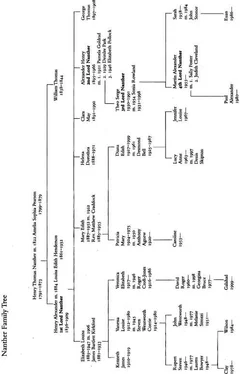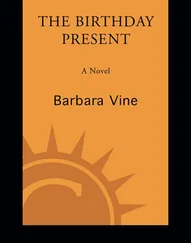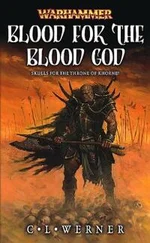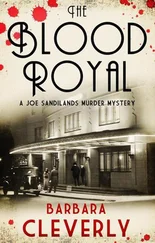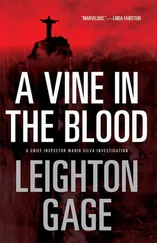Back to the Chamber for half an hour during which I strive to attend to a series of amendments I don’t much like and will vote against if any of them are brought to a division. I’m struggling not to fall asleep. Sleeping is all right for the over-sixties but frowned upon if you’re younger. If you happen to be seated behind a minister and you sink into a doze a doorkeeper will come and politely wake you up, reminding you that as soon as the minister gets up to speak you too will appear on television, open-mouthed and snoring.
At five to four I go downstairs to sit on the throne-like chair to the right of the fireplace and await the coming of Mrs Kimball and Mrs Forsythe, the two women who replied to my ad. I’ve a picture of what they’ll be like in my mind, Mrs Kimball small and round and white-haired, her daughter the same shape but with brown permed hair, both of them dressed by Marks and Spencer and both shy and overawed by this place. By my age I ought to know better than to do this because I’m always wrong. This time I’m more wrong than usual. The revolving doors swing open in a confident manner, the way they do when Lord Cranborne or Lady Blatch walk through, and in come two tall thin gaunt women with aggressive expressions, each clutching a briefcase. There must be a minimum of sixteen years between them and more like twenty-three, seeing they are mother and daughter, but they look much the same age, sisters perhaps.
We shake hands. Mrs Kimball is probably eighty but she’s as upright as a girl of eighteen and her hair is dyed a savage black which makes a curious contrast with her pale wrinkled face and the dark-red lipstick she wears. Her daughter is a little less wrinkled and her hair is dyed a rich shade of chestnut. Both wear raincoats, long, dark and belted, over afternoon dresses of flowered silk, one wine red and white, the other various shades of green and white. The doorkeeper takes their coats and I ask him if he wants to put their briefcases through the X-ray machine but he says, ‘Not as the ladies are your guests, my Lord,’ which leaves me with mixed feelings. Along with my gratitude for the courtesy and consideration of the staff in this place, goes a kind of shameful hope that the doorkeeper doesn’t think Mrs Kimball and Mrs Forsythe are related to me.
They are more unbending than they looked at first. And shyer. The vast cloakroom with pegs labelled for such august figures as the Duke of Edinburgh and the Prince of Wales overwhelms most people and Laura and Janet (which they ask me to call them) are no exceptions. Janet Forsythe wants to know if ‘Prince Philip’ ever comes in and I have to tell her I’ve never seen him except at State Openings when he accompanies the Queen. Does he use the peg then, she wants to know, but that’s something I can’t answer. We go up the great staircase, another awesome experience for newcomers, and I point out the armorial bearings on the walls, painted there by a family of artists who hand this function down from father to son.
Their rather gaunt faces, regular features and olive skin remind me of someone but I can’t think who. Probably a photograph I’ve seen or something on television. We’re bombarded with images these days. It’s at this point, as we cross the Prince’s Chamber and I have to tell them to keep their voices down and walk quickly across the blue carpet, that Laura, stepping on to the red carpet once more, tells me she’s got her grandmother’s marriage certificate to show me. She’s so insistent I see it at once that we all sit down on one of the red-leather benches opposite the painting of the Chamber in former times when a lot of peers wore silk hats. For a moment, no more than a couple of seconds, I wonder if she’s going to give me proof that Henry married Jimmy Ashworth in a secret ceremony, thus making his marriage to Edith Henderson bigamous and his descendants’ claims to sit in this House fraudulent. But the certificate is not world-shaking at all. It merely shows that Jemima Ann Ashworth, aged twenty-eight, daughter of George Edward Ashworth of Somers Town, was married to Leonard William Dawson, aged thirty-three, porter, of Lisson Grove, Marylebone, at the Church of St Mary-le-bone, on 30 October 1883.
‘My mother was Mary Dawson. She was born the following year,’ says Laura.
And where was Henry? Transferring his affections from Eleanor to Edith, I suppose. Without the diary, which is in Alma Villa, I can’t recall when the pentagrams stop, though I know it’s sometime in 1883. Laura asks if I’d like to ‘copy down’ the details on the marriage certificate but I tell her I can do better than that and I take it round the corner to the nearest photocopier while the two of them stand behind me and watch the process. Then we go into the Peers’ Guest Dining Room.
It’s intimidating, no doubt about it, and even more so when, as today, Baroness Thatcher is in there, presiding over a tea table of attentive men. Laura and Janet stare as if they’d hitherto doubted she had a real existence. A table for the three of us is secured and I order a pot of Indian tea with sandwiches, teacakes and pastries. According to the screen up on the wall, we’re still on amendment 32, a controversial one I don’t like, and its mover is on his feet. Laura asks if I’d like her to tell me everything she knows about her grandmother’s romance (her word) with Dr Nanther and, just as I enthusiastically agree, the white letters DIVISION come up on the screen with the on and off flashing picture of a red bell and the division bells start to clatter.
Like the hereditary who hadn’t been in for forty years but with more justification, Janet wants to know what that awful noise is. Is it a fire? I do my best to explain, tell them I’ll be back in five minutes, and as I get up the tea and sandwiches come.
Laura recovers her equilibrium, says she’ll be mother and not to worry, I’m to be just as long as I like. We used to have six minutes to get into the lobbies but, after pressure was exerted by government peers, the time was extended to eight minutes. That’s ample for me, I’m against the amendment, so I go through the Not Content lobby where I don’t even have to give my name, for I’m recognized before I reach the clerk who’s crossing us off. The Labour whip at the door grins as I go by and whispers, ‘More to come,’ which doesn’t affect me as I don’t take the Labour Party whip, though I suddenly find myself thinking of doing so for my remaining time in here. Back in the dining room, where a great exodus has taken place, it seems I’m the first to get back. Laura and Janet are contentedly eating cucumber sandwiches and already look much better-tempered.
‘Was everything all right?’ Janet asks.
Uncertain of what she means, I nod and smile and ask Laura to start on Jimmy Ashworth’s history. She produces something else from the envelope that contains the marriage certificate. It’s one of those postcards that were popular with the Victorians and Edwardians and which were the forerunners of World War Two pin-ups and today’s newspaper pictures of models. Famous Beauties of the Day, they could be called. I remember seeing one of Lily Langtry. Jimmy Ashworth (the name under the photograph is Jemima ‘Jimmy’ Ashworth) isn’t at all like Mrs Langtry, but quite a lot like Olivia Batho and thus, I suppose, Jude. It’s a perfectly proper photograph, though the satin gown she wears is cut rather low, exposing a formidable cleavage into which ropes of pearls disappear. She’s also wearing elbow-length white gloves and a corsage of lush flowers of the lily and stephanotis type. She has more pearls in her elaborately dressed dark hair and bracelets over the gloves.
‘She has a very sweet expression, don’t you think?’ Laura asks.
I agree, I can’t very well do anything else, but if I’d been honest I’d have said the sweetness is tempered by calculation and by something else. Not greed, not the ‘hardness’ one might expect, but – and I see it rather to my own dismay – despair. ‘Desperation’ might be the better word, it’s not quite as profound as despair. Jimmy Ashworth is very young in this picture, a good way off twenty-eight, and life isn’t holding out great promise for her, no matter that she’s got her photograph into the Famous Beauties series. I ask Laura how my great-grandfather met her and in her reply I detect that the whitewashing of all concerned has begun.
Читать дальше
